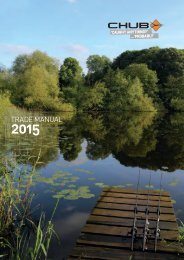CHAMPAGNE
This combination of weather influences makes for constant, moderate precipitation – a near-ideal pattern of rainfall that provides the vines with just enough water to produce quality fruit. Mean annual rainfall for the Champagne region as a whole is close to 700mm, ranging from 600mm to 900mm depending on the area.
This combination of weather influences makes for constant, moderate
precipitation – a near-ideal pattern of rainfall that provides the vines with just
enough water to produce quality fruit. Mean annual rainfall for the Champagne
region as a whole is close to 700mm, ranging from 600mm to 900mm depending
on the area.
Create successful ePaper yourself
Turn your PDF publications into a flip-book with our unique Google optimized e-Paper software.
Blending<br />
Assemblage is the art of blending wines from<br />
different grapes, vineyards and vintages, so as to<br />
produce a wine that is greater than the sum of its<br />
parts. The aim of the cellar master or winegrower<br />
who orchestrates the blend is a unique Champagne<br />
that, vintage after vintage, expresses and<br />
perpetuates the particular vision and style<br />
of each individual producer.<br />
Blends may combine wines from a whole range of vineyards, bringing together<br />
different vintages and different varietals – a highly creative exercise that relies<br />
entirely on the winemaker’s sensory memory and experience of terroir and<br />
tasting. The real challenge is to predict the development of a wine over time,<br />
bearing in mind the decisive influence of second fermentation and maturation<br />
on lees following blending.<br />
The winemaker must first decide what type of wine to create, whether a<br />
non-vintage wine (using reserve wines); a vintage wine that captures the<br />
unique style of an exceptional year; blended rosé (containing a proportion<br />
of red still wine from Champagne); blanc de blancs (made only from whiteskinned<br />
grapes); blanc de noirs (made only from black-skinned grapes); or<br />
single-vineyard Champagne (from a single village).<br />
Once blending is complete, the wine must be stabilized in preparation for bottling<br />
(particularly important for sparkling wines). This is done by chilling, which may<br />
be prolonged (-4°C for a week), short (meanwhile stirring the wines and inducing<br />
crystallization) or continuous. The aim of stabilisation is to induce crystallisation<br />
of tartaric salts then eliminate them, so preventing crystal formation in the bottled<br />
wine. Stabilisation is followed by renewed clarification.<br />
A ‘vins clairs’ tasting<br />
Blending<br />
27

















